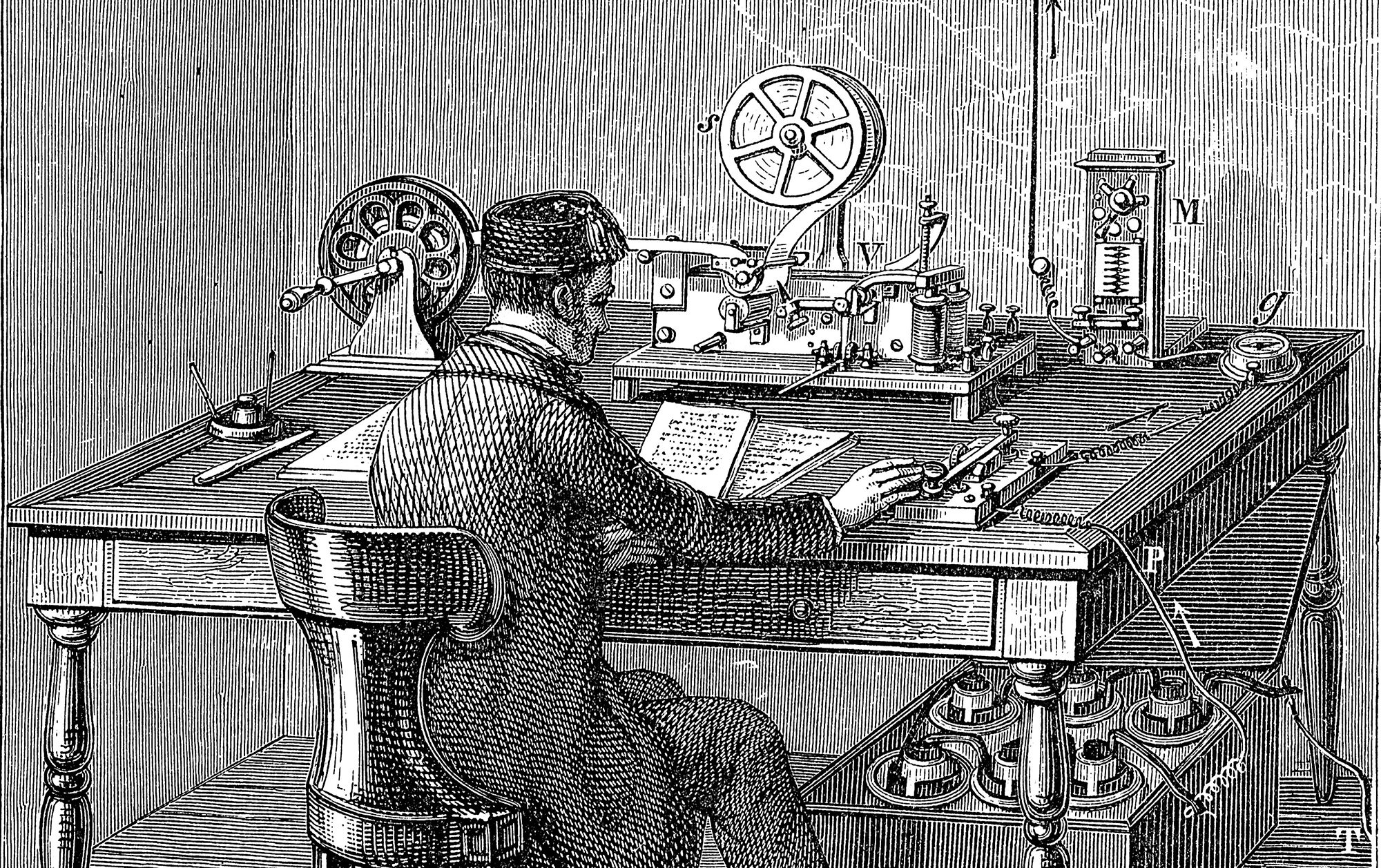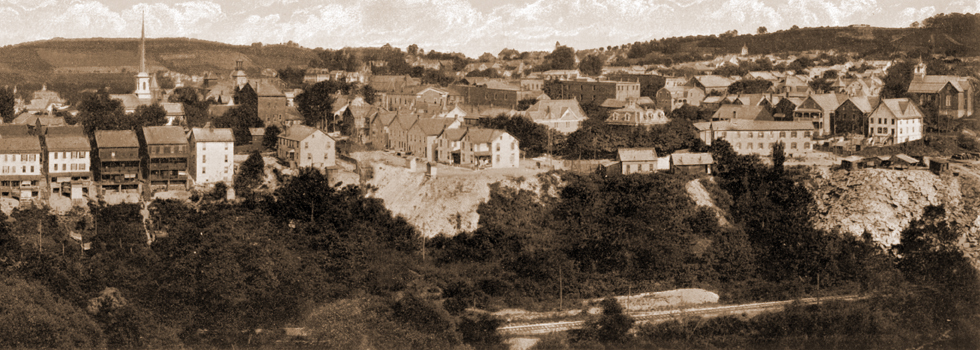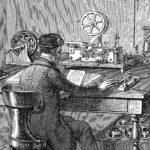My husband’s great-grandfather worked for a few years as a telegraph operator in Ohio around 1880. I did some quick searches to find out more about this occupation.
From Wikipedia:
A telegrapher, or telegraph operator is an operator who uses a telegraph key to send and receive the Morse code in order to communicate by land lines or radio.
Telegraphist was one of the very first “high-technology” professions of the modern era. Many young men and young women left their farms and fishing communities in the late 19th century to take high-paying jobs as professional telegraph operators. In those early days telegraphers were in such demand that operators could move from place to place and job to job to achieve ever-higher salaries, thereby freeing them from subsistence lives on family farms.
I don’t have a photo of my husband’s ancestor during the time he worked as a telegrapher but I found this line drawing that gives us an idea of what it must have been like.

Operator sending a message on a Morse electric printing telegraph, 1887. He is tapping out the message with a key using the code developed by Samuel Morse and Alexander Bain. Under the table are wet cells (batteries) supplying electricity. (Photo by Oxford Science Archive/Print Collector/Getty Images)
And here’s a drawing of the telegraph machine.

Phelps’ Electro-motor Printing Telegraph from circa 1880, the last and most advanced telegraphy mechanism designed by George May Phelps.


How did a telegraph reach a particular city. Did the operator have a code to alert the city in question? Why didn’t the message go all over the network?
Hi Karen! It’s Sean Fay. I had an idea I wanted to run by you. Where may I email you? Have you considered creating a Wikipedia for Frank L Fay and one for Greenville Steel Car Company? I was hoping to help.
I have a new project and may use the likeness of Frank L Fay…